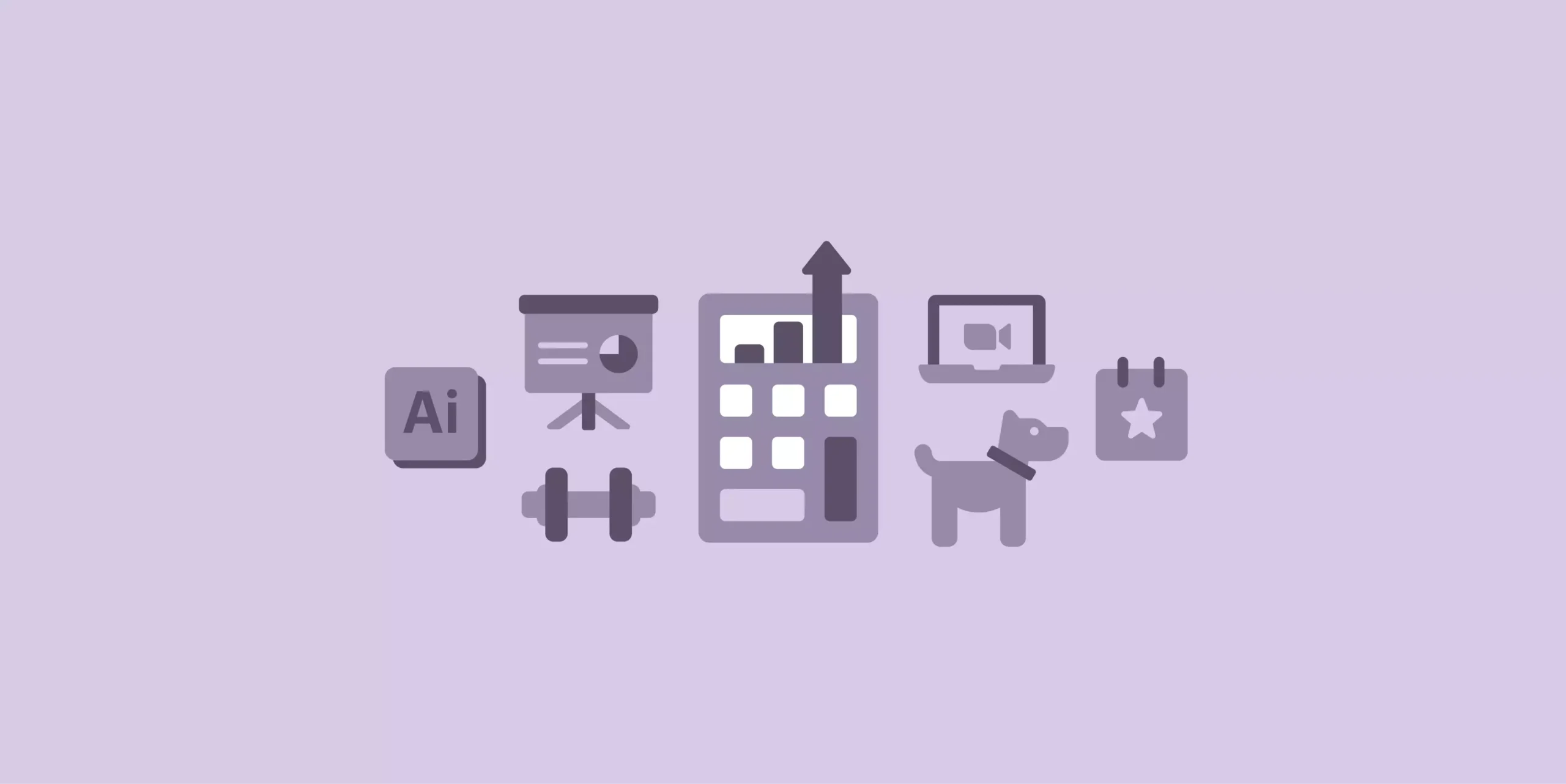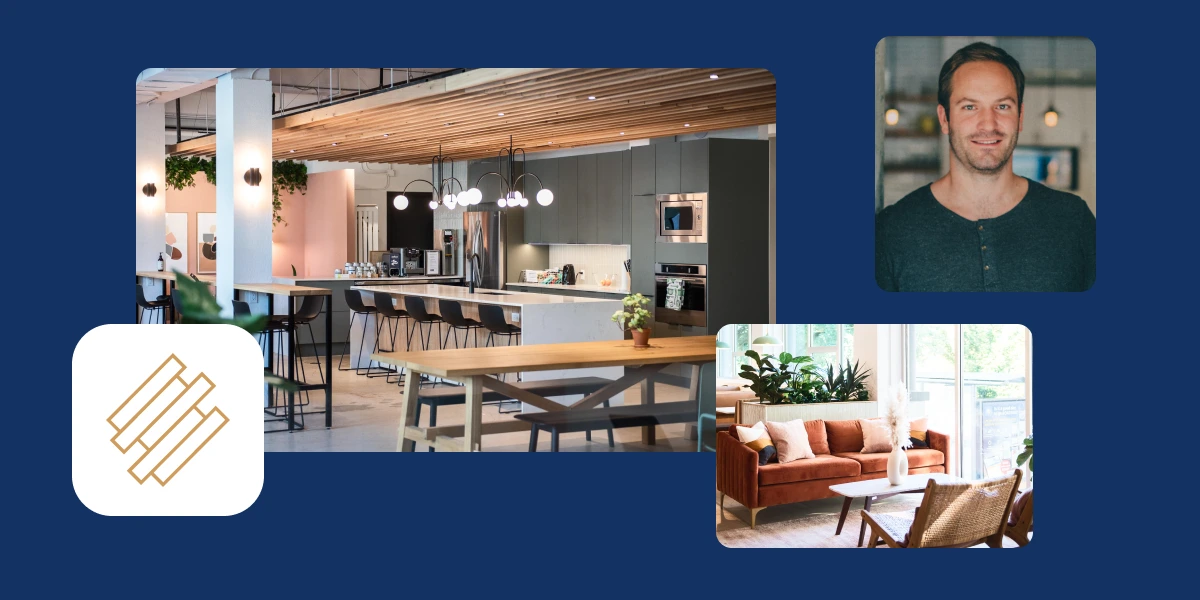
Maybe you’re looking to open a coworking space…or maybe you want to optimize how your existing space is making money.
The best place to start when it comes to generating revenue in a coworking space is with your business model. The foundation of the coworking business model is relatively simple. However, there are seemingly endless ways of interpreting it and modifying it for your specific use case.
In this article, we’ll be breaking down the coworking business model including how coworking spaces make money, how to create an effective business model for your business, and which KPIs you should track to ensure your business model is working effectively.
By the end of this article, you’ll have all of the information you need to create an effective business model for your coworking business. Let’s dive in!
How do coworking spaces make money?

Coworking spaces make money primarily by selling space in the form of desks, meeting rooms, private offices, and more.
In essence, the way coworking spaces generate revenue is simple. Let’s take a look at the example below to illustrate how money is made in a coworking space.
- Rob leases a small building in his community for $5,000/month
- He has a few recurring payments and staff that puts his overhead at $10,000/month
- He converts the space into 10 hot desks, 1 meeting room, and 5 private offices
- He plans to offer additional products and services to drive revenue such as virtual coworking services, coworking events, partnerships with local businesses, and more
- He prices his products and value–add services so it totals 3x his monthly overhead
This example is hypothetical of course (the exact numbers will depend on the market where you’re located). However, the essence of this example holds true: Rob makes money by selling space and value-added services that totals more than his overhead.
Check out this article to learn more about the 15 essential costs of starting a coworking space.
Is coworking a good business model?
To answer the question of how good the coworking business model is, it helps to look at the pros and cons of coworking as a business.
Pros
- Opportunity for diverse revenue streams: coworking spaces can generate revenue from various sources, including desk rentals, private offices, meeting room bookings, and additional services, providing multiple income streams.
- Straightforward in nature: the business model is fairly straightforward in theory, with one just needing a space and some furniture to get started.
- Addresses a growing need: coworking spaces are growing in popularity, making them an attractive business venture for many aspiring entrepreneurs.
Cons
- Operating costs: managing overhead costs, such as rent, utilities, and staffing, can be challenging, particularly in high-rent urban areas.
- Member retention: maintaining a consistent member base can be challenging, with high member turnover affecting profitability.
- Market variability: the success of a coworking space can be influenced by local economic conditions, real estate market trends, and the demand for flexible office space.
- Capital requirements: setting up a coworking space may require a significant upfront investment in lease agreements, furnishings, technology, and amenities.
As with all businesses, there are pros and cons to coworking. Ultimately, you are the only person who can decide if coworking is a good business model for you.
How to set the cost of your offerings

The best way to set the cost of your coworking products is to work backwards from your total operating costs and desire profit.
Going back to our earlier example, if it costs Rob $10,000 to run his coworking space and he wants to make at least $10,000 a month in profit to start, then he will have to price his coworking space in a way that it generates at least $20,000 a month.
This may look like:
- Hot desks = $30/day = $9,000/mo total
- Private offices = $1,000/mo each = $5,000/mo total
- Meeting room = $50/hr
An alternate way of looking at pricing is through a membership lens. Rob could set membership targets each month to help him grow his revenue.
These numbers are just a guide, but this framework will give you an idea of a process you can follow to get pricing right for your business.
Finally, we always recommend experimenting with your pricing and iterating until you find the sweet spot with your offerings for you and your community. A lot of figuring out ideal pricing is trying different things and seeing what works.
How to set coworking revenue KPIs for your space
So you have a starting point with your business model. How do you know if it’s working?
The standard way of measuring your success in any business venture is to set coworking revenue key performance indicators (KPIs). KPIs are metrics that you track that help show you how your business is performing over time.
We wrote a comprehensive guide to developing powerful KPIs for your coworking space for you to check out if you’re interested in setting KPIs for your space.
Another way of determining coworking KPIs is with a good business calculator. A business calculator can:
- Help develop growth projections
- Explore various revenue scenarios with changing variables
- Provide support in the absence of a dedicated business analyst or accountant
The Coworking Growth Calculator from Coworking Resources can be used to determine important benchmarks your space will need to reach within a 12 month period.
For example, let’s say you’ve just opened a new space and have $15,000 in membership revenue in the first month.
You have a goal to grow to at least $100,000 just in member revenue by the end of the year with the same amount of space. You currently have 60 seats occupied and a turnover rate of 4 seats per month.
This tool will then calculate:
- How long it will take you to reach capacity
- What turnover rate is needed to reach this goal
You can use these numbers to then set KPIs for your business over the course of the year to keep you on track to succeed.
For example, if you are currently at 60 occupied seats, then you’ll need to be at 400 occupied seats in 12 months. This means, you need to increase your membership by 28 seats per month. This would then become your membership KPI.
Using a business calculator such as the one outlined above can be invaluable in helping you formulate realistic, achievable goals on how you can grow your space monetarily.
Alternatively, if you are using Optix, you can always use the data and analytics tools available to you in your admin dashboard to gather insights into how your space is performing and optimize your decision making from there.
Learn how Adam from KoWorks uses Analytics to set benchmarks for his team using Optix.
Can you grow your coworking revenue by membership alone?

While you can grow your coworking space with membership alone, this amount will be finite
if there are no plans to expand the physical space. Therefore, most operators choose to incorporate other offerings aside from space into their product mix.
Once you have solidified the potential revenue you can get from memberships, you can begin to focus on any value-added services that contribute to the member experience and community culture.
One alternative to selling memberships is to monetize your meeting rooms in new and interesting ways. Let’s take a look at how to make the most of your meeting space.
Best practices for monetizing meeting rooms in your space
The beauty of a coworking space is its versatility and flexibility. You can diversify your coworking business model by monetizing meeting rooms outside normal coworking memberships.
This could mean:
- Opening it up for events after work hours or on weekends
- Holding workshops
- Hosting guest speakers
These tactics, if monitored and marketed carefully, can turn into supplemental income over fixed membership charges.
One thing to keep in mind if you decide to hold a paid workshop or host a guest speaker during work hours: monetizing areas of the space that are normally communal requires strict security enforcement.
When a conference room is usually unlocked all day long, it can be tedious to explain to members that it is suddenly inaccessible for a private event.
Your community manager needs complete control over who can enter the space and at what times to be able to track when the space is actually making revenue that is separate from general memberships.
Implementing access control systems help showcase when a room is available and is a good way to regulate these situations and maintain a clean look and feel for the office.
Growing coworking revenue with value-added services

Apart from renting meeting rooms after hours, some operators choose to include add-on services to be more competitive, while driving revenue outside of the traditional membership offering.
Consider offering additional services or partnering with nearby businesses such as:
- Gym facilities
- Daycare facilities
- Secure lockers/bike rooms
- Wellness programs and workshops (yoga/meditation room)
- Dog-friendly areas for an added fee
- Workshops (i.e. help members offer their services to the community by allowing them to host events or classes for a small fee)
While a small space may not have the room to support some of these services, demand for these add-ons could prompt a mutual partnership with nearby local businesses.
Building an ecosystem of services that members can enjoy throughout the entire workday is beneficial for everyone in the area. As an added bonus, these partnerships can also bring you more clients.
For example, your partners may hire your space to hold events that they don’t have the capacity for or recommend your day pass to new clients.
How to create additional revenue streams for your coworking space
Not all of the partnerships listed above are feasible for all coworking spaces, especially those just starting out.
However, there are other additional services and discounts that you can negotiate on behalf of your members that could add value to your community and act as additional revenue streams.
These could include:
- Special software add-ons to memberships (ex. Adobe for designers)
- Virtual coworking offerings
- Internal communications services for businesses (Skype, Zoom, etc.)
- Mental health counselling
- Life coaching
The add-ons you choose to offer should be based on the types of businesses or freelancers who use the space and the specific kind of community you are trying to build.
For example, a space that targets graphic designers and tech-focused companies will benefit from design platforms.
With an add-on service, the coworking space simply takes the hassle of managing these tasks out of the hands of the end-user.
Some services are evergreen and demanded by all kinds of customers, no matter the demographic. These include:
- Accounting and legal services
- Mail delivery and receipt
- Printing and photocopying services
- Virtual secretaries
Be strategic about the add-on services you choose to offer. Ensure that what you’re offering firmly aligns with the needs of your target market.
How to charge for add-on services in your coworking space

When thinking through how you can charge for these additional services, there are a number of options you could consider.
- Membership plan bundle: you may choose to bundle some or all of your additional services with different tiers of membership. For example, Basic memberships get access to the space ($), Pro memberships get access to the space and select services ($$), and VIP memberships get access to the space and all services ($$$)
- Add-ons only: alternatively, you may choose to offer add-ons and price them individually, such as $5/mo for Adobe photoshop access, $80/hr for massages, and $10/mo for virtual community access on top of a hot desk plan.
While it’s great to offer your members lots of options and open up additional revenue streams in your space, you don’t want to offer so many add-ons that resources are stretched and your members get confused about what the space is really offering.
Try to strike an attractive balance in your membership plans between included and add-on services.
The key to maximizing revenue is by providing value-added services that give people reasons to choose your coworking space over other available options.
Define your revenue growth model with specific tools that can help you identify costs that can be cut (or at least streamlined) and pinpoint the technologies and services that are worth investing in for the long run.
Getting started with coworking
Coworking is an exciting opportunity for community builders who want to bring people together in a new and exciting way.
While there are some challenges, as with all businesses, coworking spaces are in a unique position to serve the growing need in the community for a third space.
To succeed in this field, you need a smart business plan, happy members, and good solutions for people who work today. As work keeps changing, coworking spaces are leading the way, offering both a chance to make money and to be innovative in this growing industry.
New to coworking? Check out our collection of articles on starting a coworking business.
Frequently asked questions
Coworking spaces often fail because of an underinvestment in community and member experience, an incorrect business model or pricing strategy, a lack of demand, and a lack of differentiation.
According to research from DeskMag, roughly 52% of coworking spaces are profitable, with an additional 27% able to cover their costs.
A coworking space business is a shared workspace that makes money by selling space in the form of desks, meeting rooms, private offices, and more.
Coworking spaces make money primarily by selling space in the form of desks, meeting rooms, private offices, and more.




